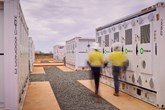A new chapter for rare earth supplies: Why the world can't afford to wait
Published by Jody Dodgson,
Editorial Assistant
Global Mining Review,
Ivan Murphy, Harena Resources, discusses how the company is developing Madagascar’s Ampasindava project to establish a scalable rare earth supply, addressing global dependence and advancing strategic mineral security.
In a world where China dominates over 90% of global rare earth mineral production, the need for alternative sources has never been more urgent. While China has invested significantly in refining and processing capacity, such concentration creates structural vulnerability in global supply chains. Export controls, internal demand pressures, and shifting geopolitical dynamics have all made one thing clear: the rest of the world needs secure, alternative sources of rare earths urgently.
Harena Resources is directly addressing this challenge.
The company is developing the Ampasindava Rare Earths Project in Madagascar, one of the largest known ionic clay deposits outside of China. Harena’s focus is clear: to build a reliable, non-Chinese supply chain for critical rare earth elements, specifically those most in demand for permanent magnet production.
The unique value of Ampasindava lies not only in its scale, with a JORC-compliant resource of over 600 000 t of rare earth oxides in-situ, but also in its composition and geology. The deposit is classified as ionic adsorption clay (IAC), a type traditionally mined in southern China. IAC deposits are far easier to process, and carry a smaller environmental footprint compared to hard rock operations. At Ampasindava, mineralisation occurs close to the surface, requiring no blasting or deep excavation. It’s a free-dig project with rapid site remediation, where rare earths can be extracted through low-impact heap leaching using benign ammonium sulphate.
In short, this is rare earth mining as it should be: efficient, scalable, and environmentally responsible. This is not just a technical asset, it's a strategic one. As the EU, US, and other nations make rare earth security a matter of national policy, projects like Ampasindava are positioned to play a central role. However, building a new supply chain is not a matter of weeks or months – it takes time to bring projects of Ampasindava’s scale to production.
That is why timing matters. Ampasindava is already well-advanced. More than 20 000 m of drilling, 277 drill holes, and 4470 test pits have been completed. With a JORC defined resource established and a pre-feasibility study complete and ready for submission, we are moving rapidly toward a definitive feasibility study by early 2026. A pilot plant will follow to confirm the project’s operational and commercial viability.
At Harena, we recently carried out fundraising to accelerate this trajectory. We are fortunate to have assembled a team with deep operational experience in Madagascar and rare earths. Both Paul Richards and myself have a long-standing history with the Ampasindava project and look forward to realising its potential. For too long, the rare earths conversation has focused on supply bottlenecks without moving decisively toward solutions. That is now changing, and Harena Resources is ready to provide the impactful solution needed to address these issues.
Read the article online at: https://www.globalminingreview.com/mining/12082025/a-new-chapter-for-rare-earth-supplies-why-the-world-cant-afford-to-wait/
You might also like
Fortescue delivers first large scale BYD Battery Energy Storage System to North Star Junction
Fortescue has delivered its first-ever large-scale Battery Energy Storage System (BESS) to North Star Junction (NSJ), marking a major milestone in the company’s mission to decarbonise its Pilbara iron ore operations.

